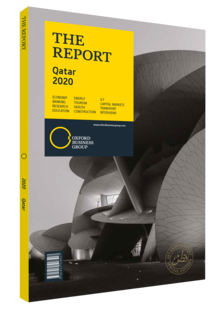Public-private partnership builds in Qatar attract foreign direct investment
Following several years of global economic uncertainty, budget deficits and unpredictable oil prices, in April 2019 the Council of Ministers approved a long-discussed public-private partnership (PPP) law, expected to be formally enacted in 2020. The new law is intended to clarify and regulate the framework for projects involving both the government and private firms. Also in early 2019, Sheikh Tamim bin Hamad Al Thani, the Amir of Qatar, issued Law No. 1 of 2019 regarding foreign direct investment (FDI), which laid out rules for the investment of non-Qatari capital, and permitted up to 100% foreign ownership in any sector and trade activity in the country. The laws are designed to accelerate the country’s pipeline of projects through the next decade.
PPPs are not new to Qatar. The model was used to build a power and water desalination plant in Ras Laffan, and a power plant in Mesaieed. There was, however, no formal law regulating such projects until the one approved by the Cabinet in 2019. The law aims to attract significant amounts of foreign investment through PPPs and turn the framework into a common practice.
Structures
According to the law, possible PPP models include those defined as build-operate-transfer, build-transfer-operate and build-own-operate-transfer (BOOT). The private sector can also develop land through a rental or usage licence, or enter operations and maintenance agreements with the government. Possible structures for PPPs are not strictly limited to those mentioned above; new arrangements can be adopted if proposed by a minister following the approval of the prime minister.
Current & Future Projects
In January 2019 Qatar announced a major PPP pilot project that would see 45 public sector schools financed, built and maintained under the model at an estimated capital expenditure of QR4bn ($1.1bn). The projects, divided into six packages, are scheduled to be completed between 2021 and 2023, and will involve the participation of several government ministries. The Ministry of Education and Higher Education will head the schools’ operation and contract management; the Ministry of Finance will guarantee payments and provide PPP policy and guidance; and the Public Works Authority (Ashghal) will oversee procurement, management, design and construction. The deadline for firms to submit expressions of interest was January 31, 2019, but Ashghal had made no public announcements as to whether contracts had been awarded as of late March 2020.
Further PPP announcements followed that of the schools. In March 2019 Ashghal held a roadshow for a sewage treatment plant for Al Wakra and Al Wukair to be constructed as a PPP. The project, which will have an initial capacity to treat 150,000 cu metres of waste water per day, will be operated and maintained for 25 years by the private partner, after which control will be transferred to Ashghal. Other PPP plans for utilities projects have also been set forth. In January 2020 France’s Total and Japan’s Marubeni were awarded a contract for the 800-MW, QR1.7bn ($467.9m) Al Kharsaah solar power plant. The contract was designed as a BOOT model, and ownership will be handed over to Qatar General Electricity and Water Corporation after 25 years.
The agriculture sector is also likely to see benefits from the new law. In late 2019 Mohamed bin Ahmed Al Obaidli, board member of Qatar Chamber, cited at a seminar the importance of a new law regarding the strategic storage of food and consumption goods as a key pillar in the country’s PPP strategy. Earlier in 2019 Giosafat Rigano, the Italian trade commissioner to Qatar, told local media that the “PPP law is an important tool to develop cooperation agreements between Italian and Qatari companies”, emphasising Italy’s history in supplying food storage technology to the region.
With the continuing dramatic fluctuations in the price of oil and the slowing global economy, the government is positioning itself to make increasing use of the PPP model for infrastructure and construction projects it has earmarked for the near and medium term.
You have reached the limit of premium articles you can view for free.
Choose from the options below to purchase print or digital editions of our Reports. You can also purchase a website subscription giving you unlimited access to all of our Reports online for 12 months.
If you have already purchased this Report or have a website subscription, please login to continue.

